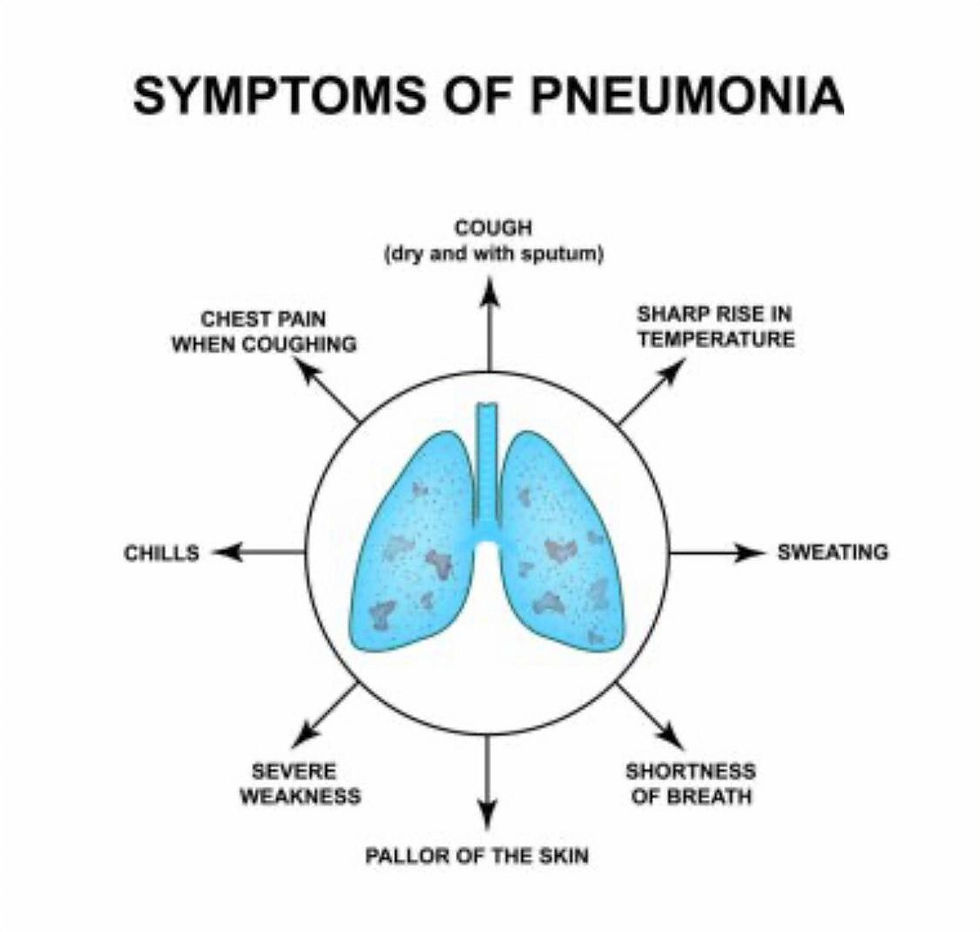Khushboo Verma, Jadetimes Staff
Khushboo Verma is a Jadetimes newsreporter covering Health News

Pneumonia is a serious lung infection that causes inflammation and fluid buildup in the air sacs, disrupting normal breathing and oxygen exchange. The condition can range from mild to severe and may lead to complications like sepsis, pleural effusion, or lung abscesses, especially if left untreated.
Symptoms typically include cough, fever, shortness of breath, and fatigue, with an increased heart rate as the body works to compensate for lower oxygen levels. Pneumonia can be caused by various pathogens, including bacteria, viruses, fungi, and even inhaled food or liquid. Understanding the types of pneumonia—community-acquired, hospital-acquired, and aspiration pneumonia—along with recognizing its signs and seeking prompt medical attention, is crucial for effective treatment and recovery.
November 12th marks World Pneumonia Day, a key observance dedicated to raising awareness about pneumonia, the world's leading infectious disease, and advocating for prevention strategies to reduce its devastating impact. Despite being preventable and treatable, pneumonia continues to be a major health threat, especially for young children under five, who are most at risk. In fact, pneumonia remains one of the leading causes of death among children worldwide, responsible for over 800,000 child fatalities each year.
Pneumonia: A Global Health Crisis
Pneumonia is particularly deadly for children, the elderly, and individuals with weakened immune systems. According to the World Health Organization (WHO), pneumonia accounts for nearly 15% of all childhood deaths globally, with young children in low- and middle-income countries facing the highest risks due to factors like poor nutrition, inadequate healthcare access, and limited vaccination coverage.
Pneumonia’s impact is felt disproportionately in regions with limited healthcare infrastructure, where the disease often remains undiagnosed or untreated. Sub-Saharan Africa, Southeast Asia, and parts of Latin America are particularly affected, but the disease does not discriminate based on geography, age, or socioeconomic status.
Global Efforts to Combat Pneumonia
In response to the global burden of pneumonia, governments and international health organizations have stepped up efforts to prevent and treat the disease. One of the most effective strategies has been the introduction and widespread distribution of vaccines, particularly the pneumococcal conjugate vaccine (PCV), which protects against Streptococcus pneumoniae—a leading cause of bacterial pneumonia.
In 2017, India introduced the PCV into its national immunization program, reaching millions of children across the country. As a result, the country has seen a notable decline in pneumonia-related deaths. Other nations, including Kenya, Bangladesh, and South Africa, have similarly rolled out vaccination programs with significant success. The introduction of the PCV, in combination with improved sanitation, nutrition, and healthcare access, has led to a dramatic reduction in pneumonia cases and fatalities.
For example, in South Africa, the introduction of the pneumococcal vaccine in 2011 resulted in a 25% reduction in child pneumonia deaths. Similarly, Kenya’s efforts to increase vaccination coverage and improve healthcare access have led to a 30% decrease in pneumonia-related hospitalizations.
Positive Declines in Pneumonia Mortality
The global efforts to tackle pneumonia are showing promising results. The WHO reports a steady decline in the number of pneumonia-related deaths over the past decade, largely due to improvements in vaccination, early diagnosis, and timely treatment. Data from countries that have aggressively pursued vaccination campaigns and strengthened their healthcare infrastructure show encouraging trends:
- Brazil has seen a 30% drop in pneumonia mortality rates since the introduction of the pneumococcal vaccine in 2010.
- China has reduced pneumonia-related child mortality by 40% over the last decade, thanks to its multi-pronged approach involving vaccination, better healthcare access, and improvements in maternal and child care.
- Bangladesh has experienced a steady decline in pneumonia-related fatalities, attributed to vaccine coverage, increased public awareness, and enhanced healthcare services in rural areas.
These successes highlight the power of prevention, particularly through immunization and improved healthcare systems, in reducing the global burden of pneumonia.
Addressing the Challenges Ahead
Despite these positive outcomes, pneumonia remains a formidable health challenge, especially in low-income countries. Millions of children still lack access to vaccines and basic healthcare services, putting them at risk of this deadly disease. Additionally, pneumonia is often exacerbated by environmental factors such as poor air quality, inadequate sanitation, and malnutrition, making it even harder to address in certain regions.
In many areas, pneumonia continues to be underreported or misdiagnosed, further complicating efforts to manage the disease. Public health experts emphasize the need for continued investment in healthcare infrastructure, improved diagnostics, and more widespread access to vaccines to ensure that all children, regardless of where they live, are protected from this preventable illness.
There is also a need to address environmental determinants of pneumonia. Reducing indoor air pollution, improving access to clean water and sanitation, and promoting breastfeeding are all essential steps in preventing pneumonia and supporting the overall health of children.
A Call to Action
As we observe World Pneumonia Day, it is crucial to reflect on the progress made and the work that still lies ahead. The decline in pneumonia-related deaths in certain countries is proof that the fight against pneumonia is not in vain. However, this progress must be extended to all corners of the globe, ensuring that every child, no matter where they are born, has access to the vaccines and healthcare they need to survive.
Health organizations, governments, and communities must continue to raise awareness, educate the public, and work together to ensure that pneumonia becomes a disease of the past. Through sustained efforts, we can significantly reduce pneumonia’s impact and move closer to a world where no child dies from this preventable illness.
On this World Pneumonia Day, let us renew our commitment to fighting pneumonia, saving lives, and ensuring a healthier future for children everywhere.

































Comments